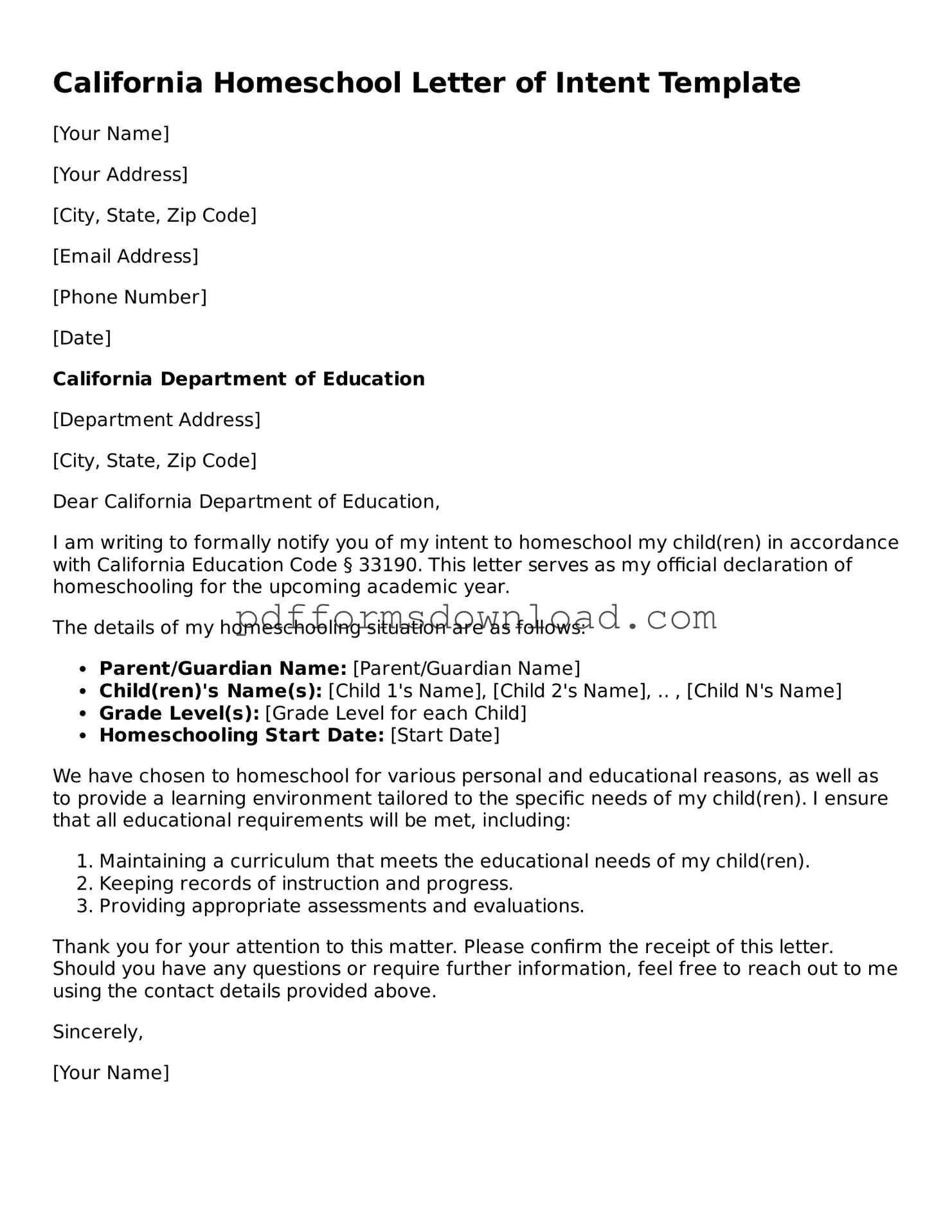Printable California Homeschool Letter of Intent Form
The California Homeschool Letter of Intent is a crucial document that parents must submit to formally notify the state of their decision to homeschool their children. This form serves as an official declaration, ensuring that families comply with state regulations while providing their children with a personalized education. Understanding how to complete this form is essential for a smooth homeschooling experience, so be sure to fill it out by clicking the button below.
Make This Document Now
